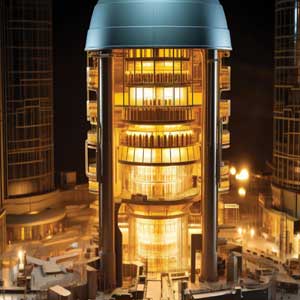THANK YOU FOR SUBSCRIBING

Optimizing Technology Integration in the Hospitality Industry
Clive Edwards, Senior Vice President Of Operations, And Elaine Khoo, Quality Manager, Capella Hotels And Resorts


Clive Edwards, Senior Vice President Of Operations, And Elaine Khoo, Quality Manager, Capella Hotels And Resorts
• Contactless check-in / out
• Digital room keys
• Mobile app
• In-room tablets
• Digital in-room dining menu and ordering
• Service requests
• Online spa booking
• Online table booking
With The Plethora Of Solutions For This Burgeoning Space Of Digitization, One Question That Does Not Get Answered Enough Is When Do We Introduce New Technology
With the plethora of solutions for this burgeoning space of digitization, one question that does not get answered enough is when we introduce new technology. The why for introduction in most cases is already predefined in hardcore measurements including but not limited to: -
• Percentage of orders through in-room tablets
• The number of engagements through our Guest communication software and percentage of on-time responses and closed conversations.
• Percentage of escalation for requests and average resolution times
• Reduction in compensation costs, upselling revenue
Equally the How as a road map is equally articulated with Gantt charts and interface requirements. What is not clear is the when. When do we disturb our current architecture of integration and how do we measure that we have reached the sweet spot of an architecture which need not be disturbed in the short term being defined as less than 2 years?
Four concepts that are important and should be considered in answering these 2 above questions include: -
1. Reduced switching costs within the customer journey for Colleagues. Our Colleague experience in being guardians of the guest experience whilst adhering to the efficiency being demanded will either be impacted negatively or positively by these systems they have to engage with. The number of software partners needs to be reviewed in facilitating the customer journey from inquiry to booking to engagement to check-in, Hotel experience in IRD, Spa reservations, customer engagement with concierge and guest expediting through check-out and poststay survey, and continued marketing in a Know Your Customer environment. If this process requires more than 5 separate systems…Houston, we have a problem.
2. Platform adaptation across regions and efficacy translated. What are the core organizational competencies and measurements which transcend location and cultures with the customer experience and are our technology partners able to satisfy this need?
3. Relevance of core functionalities, meaning within the industry the platform as it was originally intended satisfies its core purpose. There will always be a challenge in removing the subjectivity from this point which can be reduced through the creation of a matrix assigning value to the original goals and what new elements are available through other technology which is currently not being met
4. Quantifiable switching costs for adaptation. Physical costs of purchase and ROI calculations are necessary. In-depth, appreciation of the training requirements and required new skills to be on-boarded are often overlooked. The frustration of Colleagues may be captured in bi-annual employee satisfaction surveys if these are not considered.
-
The Revenue In The Hotel Market In APAC Is Expected To Grow At An Annual Rate Of 3.93 Percent, Resulting In A Projected Market Volume Of USD 181.20 Billion By 2029
hat the architecture of integration is examined in 3–5-year windows. This both allows for a review of the best technology which would be tested and provide a more robust application with limitations of switching as software developers increasingly review combining functionalities. In addition to quelling the disruption in sustaining momentum for Organizational workflows and Colleague learning and limiting relearning obstacles.
There will have to be the same consideration of the above as we continue to become inundated with technological solutions, especially with the advent of AI and the opportunities it presents for Hospitality. Particularly with relatively low at this time adoption costs and seismic payroll-saving opportunities.
What would some of these possible applications for the future include for hospitality;
1. Given the luxury of choice and the increased digitization of customers, guests are more willing to communicate through mobile means on the platform of their choice be it Line, WhatsApp, WeChat, telegram etc. Therefore, the opportunity to expand on pre-arrival communication is expansive. In many cases, this communication is limited prearrival to FAQs through chatbots, and real communication is reserved on-site through a digital concierge as a function of the manning needed to have these conversations.
If these hardworking colleagues’ vernacular and intention can be expanded in a pre-arrival setting not sanctioned with volume constraints OH what a world opens up. The impact on ancillary spending is a worthy ROI given interfaces with other Spa and Open table systems we can secure more guests in our outlets and Spa before arrival and yield better on-site for non-peak periods.
2. Voice-enabled AI with an interface to booking systems revolutionises reservations, departments, and even more dramatically call centres across the world and outside of the Hospitality industry with fewer mistakes and greater accuracy
3. AI to provide personalized experiences to its guests. By analysing guest data, AI allows organizations to understand their guests’ preferences, from room temperature to dining choices, to preferred activities. This knowledge enables them to tailor their services to each guest’s needs and expectations, leading to a highly personalized and more satisfying stay.
4. Smart Rooms Capitalizing, AI to revolutionize their accommodation. Their rooms are equipped with AIdriven amenities that respond to voice commands, allowing guests to control lighting, temperature, and entertainment systems. This offers a seamless, userfriendly experience that modern travellers appreciate. In addition, interfaces allow for capturing the ever-producing customer preference obtained through requests.
5. Revenue Management produces another area where AI is already being leveraged. AI algorithms analyse vast amounts of data, including booking patterns, competitor pricing, and local events, to forecast demand and optimize room rates. This dynamic pricing strategy helps Hotels maximize their revenue while maintaining competitive prices for their guests
The core opportunity therefore with this is how to be able to combine high tech with high touch and ensure this technology enhances the humanity of the experience and not replace it. Expanding on the true luxury of time and facilitating greater responsiveness where it matters working with the human-centric services that define the industry and the harmonious fusion of technology and personalized human service. Whilst this presents a new dimension for consideration the review of architecture, system integration, switching costs, and ROI will ultimately still need to be done to determine implementation Yes or No and for how long prior to being reviewed.
Weekly Brief
I agree We use cookies on this website to enhance your user experience. By clicking any link on this page you are giving your consent for us to set cookies. More info
Read Also












